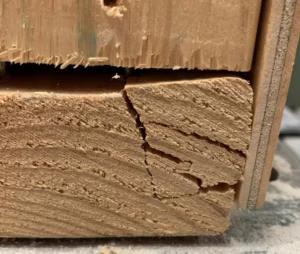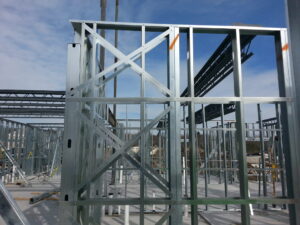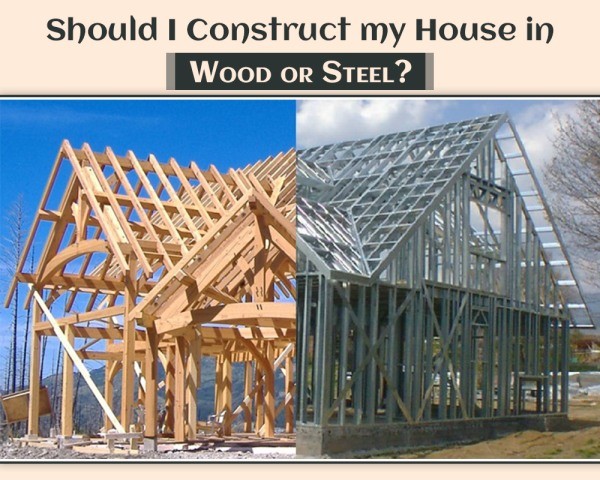Steel vs Wood Construction: Which Material Reigns Supreme for Your Next Project?
When it comes to construction, the age-old debate between steel and wood continues to captivate builders, architects, and homeowners alike. Choosing the right material for your next project can significantly impact durability, aesthetics, and even budget. Steel boasts unparalleled strength and resilience, making it a favorite for those seeking longevity and minimal maintenance. On the other hand, wood offers warmth, natural beauty, and sustainability, appealing to those who prioritize eco-friendliness and charm. Whether you’re dreaming of a modern industrial space or a cozy rustic retreat, understanding the advantages and challenges of each material is crucial. In this article, we’ll delve into the key factors that differentiate steel vs wood construction—helping you determine which material reigns supreme for your specific needs. Get ready to explore the pros and cons, expert insights, and real-world applications that will guide your decision-making process as you embark on your next building endeavor.

Comparing Durability: Steel vs. Wood
When evaluating the durability of construction materials, steel and wood present stark contrasts. Steel is renowned for its exceptional strength and resilience. Its ability to withstand natural elements such as heavy winds, earthquakes, and fire makes it a preferred choice for structures that require long-term durability. Steel does not warp, twist, or splinter over time, ensuring that the structural integrity of the building remains intact for decades. Additionally, steel’s resistance to pests, including termites and rodents, eliminates a common threat that can compromise the longevity of wood structures.
Wood, while offering a different kind of durability, has its own set of strengths. Properly treated and maintained wood can last for an extended period, especially when used in environments that are not exposed to extreme weather conditions. Wood’s natural flexibility under stress allows it to absorb impacts without breaking, which can be advantageous in certain applications. However, wood is susceptible to rot, decay, and insect infestations if not adequately protected. These vulnerabilities necessitate regular maintenance and treatment to preserve the material’s durability over time.
Ultimately, the choice between steel vs wood construction in terms of durability will depend on the specific requirements of your project. If you are building in an area prone to natural disasters or require a structure with minimal maintenance, steel may be the superior option. Conversely, if you are looking to create a structure with a more natural aesthetic and are willing to invest in ongoing maintenance, wood could be a viable choice. Understanding the environmental conditions and specific needs of your project will guide you in selecting the material that best aligns with your durability expectations.

Cost Analysis: Initial Investment and Long-Term Expenses
The financial aspect of construction is a critical consideration when choosing between steel vs wood construction. Steel, while generally more expensive upfront, offers long-term savings due to its durability and low maintenance requirements. The initial investment in steel includes the cost of the material itself, which is typically higher than wood, as well as specialized labor for assembly. However, these costs are often offset by the reduced need for repairs and replacement over the building’s lifespan. Steel structures also tend to have lower insurance premiums due to their resilience against fire and natural disasters.
In contrast, wood is often favored for its lower initial costs. The availability of wood and the relative ease of construction using traditional carpentry methods can make it a more budget-friendly option at the outset. However, wood structures may incur higher long-term expenses due to maintenance needs, such as painting, sealing, and treating against pests. Additionally, the potential for damage from weather, termites, and rot can lead to frequent repairs and replacements, adding to the overall cost over time.
When conducting a cost analysis, it’s essential to consider both the short-term and long-term financial implications. While wood may be more economical initially, steel’s longevity and minimal upkeep can result in significant savings over the life of the building. It’s also important to factor in potential insurance savings and the impact of potential future repairs. By evaluating the total cost of ownership, you can make a more informed decision that aligns with your budget and financial goals.
Environmental Impact of steel vs wood construction
The environmental impact of construction materials is an increasingly important consideration for builders and homeowners. steel vs wood construction each have distinct ecological footprints, influenced by their production processes, lifecycle, and sustainability. Steel production is energy-intensive and generates significant greenhouse gas emissions. However, steel is highly recyclable, with most steel used in construction containing a substantial percentage of recycled content. This recyclability reduces the need for raw material extraction and minimizes waste, contributing to a more sustainable lifecycle.
Wood, on the other hand, is a renewable resource when sourced responsibly. Sustainable forestry practices ensure that trees are replanted and forests are managed to maintain ecological balance. Wood also acts as a carbon sink, storing carbon dioxide absorbed during the tree’s growth and helping to mitigate climate change. The production of wood generally involves less energy and fewer emissions compared to steel. However, irresponsible logging practices can lead to deforestation, loss of biodiversity, and negative environmental impacts.
Choosing between steel and wood from an environmental perspective involves weighing the benefits and drawbacks of each material. Steel’s recyclability and long lifespan can contribute to a circular economy, while wood’s renewability and lower production emissions support sustainable building practices. It’s important to consider the sourcing of materials, the efficiency of production processes, and the potential for recycling or repurposing at the end of the building’s life. By prioritizing environmentally friendly practices, you can make a choice that aligns with your commitment to sustainability.
Aesthetic Considerations: Design Flexibility and Style
The aesthetic appeal of construction materials plays a significant role in the overall look and feel of a building. Steel vs wood construction offer distinct visual and stylistic qualities that can influence the design and ambiance of a space. Steel’s sleek and modern appearance makes it a popular choice for contemporary and industrial designs. Its ability to be molded into various shapes and forms allows for innovative architectural expressions, including open floor plans, large windows, and exposed structural elements. Steel’s clean lines and minimalist aesthetic can create a sense of sophistication and modernity.
Wood, in contrast, offers a warm and natural beauty that is difficult to replicate with other materials. Its rich textures, grains, and colors add character and charm to a space, making it a favorite for traditional, rustic, and cozy designs. Wood’s versatility allows it to be used in numerous applications, from structural beams to decorative finishes. The natural variations in wood create a unique and inviting atmosphere, contributing to a sense of comfort and homeliness. Additionally, wood can be stained or painted to achieve a wide range of looks, enhancing its design flexibility.
When considering aesthetics, it’s essential to think about the overall vision for your project. If you aim for a modern, industrial, or minimalist look, steel may be the ideal choice. Its ability to create large, open spaces and its contemporary appeal can help achieve your design goals. Conversely, if you desire a warm, inviting, and natural environment, wood’s inherent beauty and versatility can bring your vision to life. Understanding the stylistic qualities of each material and how they align with your design preferences will guide you in making the right choice for your project’s aesthetics.
Building Codes and Regulations: What You Need to Know
Navigating building codes and regulations is a critical aspect of any construction project. Both steel vs wood construction must comply with local, state, and national building codes, which govern everything from structural integrity to fire safety. Steel construction typically requires adherence to stringent codes due to its use in high-rise buildings, commercial structures, and industrial applications. These codes often mandate specific standards for materials, welding, and assembly to ensure the safety and stability of steel structures.
Wood construction is also subject to a comprehensive set of building codes, especially in residential and low-rise buildings. Codes for wood structures address issues such as load-bearing capacity, fire resistance, and protection against pests and moisture. In some regions, wood construction may be subject to additional regulations aimed at preserving historical or architectural integrity. Compliance with these codes is essential to obtaining building permits and ensuring the safety and durability of the structure.
Understanding and complying with building codes can be complex, but it is a necessary step in the construction process. Consulting with architects, engineers, and local building authorities can help ensure that your project meets all regulatory requirements. Whether you choose steel vs wood construction, staying informed about the relevant codes and regulations will help you avoid potential legal and safety issues, ultimately contributing to the success of your construction project.
Construction Timeframes: Speed of Assembly and Project Delays
The timeline of a construction project can significantly impact overall costs, scheduling, and project success. steel vs wood construction have different timeframes and potential for delays, influenced by factors such as material availability, labor requirements, and weather conditions. Steel construction often benefits from prefabrication, where components are manufactured off-site and assembled on-site. This process can significantly reduce construction time, as on-site work is limited to assembling pre-made parts. Steel’s precision and uniformity also minimize the likelihood of errors and rework, contributing to a faster and more efficient construction process.
Wood construction, while typically involving more on-site work, can also be relatively quick, especially for smaller residential projects. Traditional carpentry techniques and the use of readily available materials can expedite the building process. However, wood construction is more susceptible to weather-related delays, as prolonged exposure to moisture can affect the quality and integrity of the wood. Additionally, the need for custom cutting and fitting can extend the construction timeline, especially for more complex designs.
When planning your project, it’s essential to consider the potential for delays and the overall construction timeline. Steel’s prefabrication and assembly efficiency can be advantageous for projects with tight deadlines or those located in challenging environments. On the other hand, wood’s familiarity and ease of use can facilitate faster completion for simpler structures. By understanding the construction timeframes associated with each material, you can make informed decisions that align with your project’s schedule and goals.
Maintenance Requirements for steel vs wood construction
Maintenance is a crucial aspect of preserving the longevity and appearance of any building. Steel vs wood construction have different maintenance needs, influenced by their inherent properties and susceptibility to environmental factors. Steel is known for its low maintenance requirements, as it is resistant to many of the common issues that affect building materials. Steel does not rot, warp, or splinter, and it is impervious to termites and other pests. However, steel can be susceptible to corrosion, especially in coastal or humid environments. Regular inspections and the application of protective coatings can help prevent rust and extend the life of a steel structure.
Wood, while offering a warm and natural aesthetic, requires more proactive maintenance to ensure its longevity. Wood is vulnerable to moisture, which can lead to rot, mold, and warping if not properly sealed and protected. Regular painting, staining, and sealing are necessary to shield wood from the elements and maintain its appearance. Additionally, wood structures must be inspected for signs of pest infestations, such as termites, which can cause significant damage if left unchecked. Addressing these maintenance needs promptly is essential to preserving the structural integrity and beauty of a wood building.
When considering maintenance, it’s important to factor in both the time and cost associated with upkeep. Steel’s minimal maintenance can result in long-term savings and reduced effort, making it an attractive option for those seeking a low-maintenance building. Conversely, wood’s higher maintenance requirements can be worthwhile for those who appreciate its natural beauty and are willing to invest in regular care. Understanding the maintenance needs of each material will help you make an informed decision that aligns with your lifestyle and maintenance preferences.
Case Studies: Successful Projects Using Steel and Wood
Examining real-world examples of successful projects can provide valuable insights into the practical applications and benefits of steel and wood construction. One notable steel construction project is the Willis Tower (formerly Sears Tower) in Chicago. This iconic skyscraper, constructed with a steel frame, demonstrates the material’s strength and ability to support towering structures. The use of steel allowed for an innovative design with large, open floor spaces and extensive glass windows, creating a modern and functional office building that has stood the test of time.
In contrast, the Hearst Castle in California is a prime example of the beauty and versatility of wood construction. This historic mansion, built in the early 20th century, features intricate woodwork, including hand-carved ceilings, paneling, and furniture. The use of wood throughout the castle creates a warm and inviting atmosphere, highlighting the material’s potential for detailed craftsmanship and timeless elegance. The Hearst Castle continues to attract visitors from around the world, showcasing the enduring appeal of wood in architectural design.
Another successful project that highlights the benefits of wood construction is the Bullitt Center in Seattle, often referred to as the “greenest commercial building in the world.” This six-story office building is constructed primarily from sustainably sourced wood and incorporates numerous eco-friendly features, including solar panels, rainwater harvesting, and composting toilets. The Bullitt Center demonstrates how wood can be used to create sustainable and environmentally responsible buildings that prioritize energy efficiency and occupant health.
These case studies illustrate the diverse applications and advantages of steel vs wood construction. Whether you are aiming for a modern skyscraper, a historic mansion, or a sustainable office building, the choice of material can significantly influence the design, functionality, and impact of your project. By examining successful examples, you can gain a deeper understanding of how steel and wood can be used to achieve your construction goals.
Conclusion: Making the Right Choice for Your Project
Choosing between steel vs wood construction for your next project involves careful consideration of numerous factors, including durability, cost, environmental impact, aesthetics, building codes, construction timelines, and maintenance requirements. Both materials offer unique advantages and challenges that can influence the success and satisfaction of your building endeavor. Steel’s unparalleled strength, resilience, and low maintenance make it an excellent choice for structures that require longevity and minimal upkeep. Its modern aesthetic and design flexibility also make it ideal for contemporary and industrial projects.
On the other hand, wood’s natural beauty, warmth, and sustainability appeal to those who prioritize eco-friendliness and charm. Wood’s versatility in design and its ability to create inviting and comfortable spaces make it a popular choice for residential and traditional buildings. However, wood’s higher maintenance needs and susceptibility to environmental factors must be considered when making your decision.
Ultimately, the right choice for your project will depend on your specific needs, preferences, and goals. By understanding the key differences between steel and wood and evaluating how each material aligns with your vision, you can make an informed decision that ensures the success and satisfaction of your construction project. Whether you choose the strength of steel or the charm of wood, your building will be a testament to the thoughtful consideration and expertise that went into its creation.

